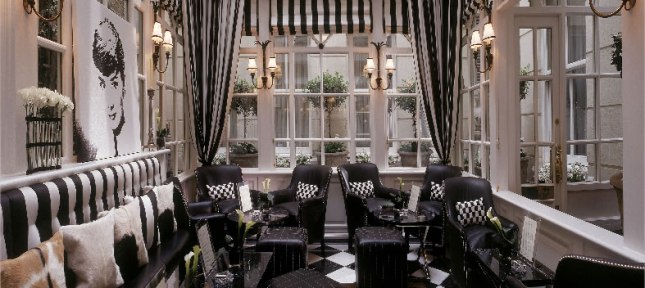Christian Van Luven is the owner of Syracuse’s Roji Tea Lounge. He sat down with The Teatotaler to talk about tea, his business, and why Syracuse is the perfect setting for a tea house.
The Teatotaler: When and why did you open Roji Tea Lounge?
Van Luven: At first we were living in NYC when one of our friends, who was working on Marshall St., suggested we open up a sushi or bubble tea place there. We were big fans of bubble tea in Chinatown at the time, and the idea of opening our own place seemed like the right time and direction for us. After a year of planning, site selection, menu changes, logo, and name, Roji Tea Lounge finally opened its doors in May of 2004.
TT: What is the demographic that patronizes the tea house?
VL: I would say it ranges by the time of day. During the afternoon, it’s a good meet up destination for people downtown, or a place for teachers and students to relax and sit with their laptops. During the weekend nights it becomes an alternative to the bar scene, where many college and high school students can come and socialize while feeding their tea and dessert cravings! Sometimes those days swap, so I guess we have a very broad demographic!
TT: What is your favorite tea? The most popular in the shop?
VL: I am a big green tea fan. I like Houji-cha [a Japanese green tea that is roasted in a porcelain pot over charcoal], as well as Genmai-cha [green tea combined with roasted brown rice]. The most popular in the shop would be Chai, Keemun [a fruity Chinese tea], and Mountain Grape, a flavored Sen-cha blend.
TT: Your mission statement declares that “we are all equal in front of tea.” Could you explain this philosophy further?
VL: This is kind of our interpretation from what Sen no Rikyu, who was heavily influential in Japan on chanoyu (“way of tea”) meant, that regardless of age, sex, political views, or color, tea is meant to be enjoyed by all, and the mind should be at ease when enjoying it! I would also recommend reading, for those who want more of an understanding of what influenced us, to read “The Book of Tea” by Okakura Kakuzo. It really explains what direction we want to go with Roji.
TT: I have an ongoing series of posts in my blog entitled “The Great Debate: Tea vs. ‘Fee.” Do you drink coffee?
VL: I tried coffee, on a regular basis (meaning more than the occasional once every five years or so) for the first time last year. My friend was experimenting with “fire roasting” coffee beans, using maple or oak wood. It actually tasted amazing, but it also gave me the quick highs and a crashing low effect! I have not really touched it since. I don’t know if I’m adapted to drinking it, maybe it’s just not for me, but I still enjoy the smell of it, oddly enough.
TT: How would you describe the physical aesthetic of Roji? What are you trying to accomplish?
VL: Right now we are in between phases. We have a second room that was added three years ago. We have it set up in “tatami” room fashion, and everyone sits on the floor. Our main room is surrounded by couches and small tables. It definitely gives you a relaxing vibe as you enjoy your tea. This year we are trying to work with the city for a grant to rebuild some of our furniture and counter space. Using reclaimed wood pieces, it will give our shop a unique aesthetic as well as complement the tea! I’m hoping that will happen in the fall.
TT: Why does Syracuse need a place like Roji?
VL: As society seems to keep moving at a pace faster than we realize, there are few places where you can come in and drop the worries of the day, even for a short time. We’ve always looked at this as an oasis from the outside, which is where we came up with the name Roji (which means “the pathway that leads you to the tea room”). Over the years, the vibe and crowd may change, but the overall goal has always been to provide excellent service to our customers and provide a comfortable atmosphere to enjoy their tea.
Roji Tea Lounge is located at 108 E. Washington Street, Syracuse, N.Y.
